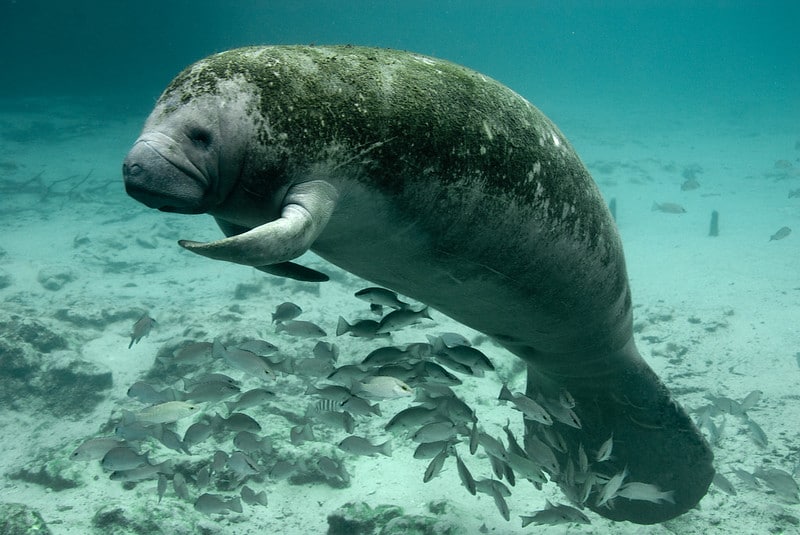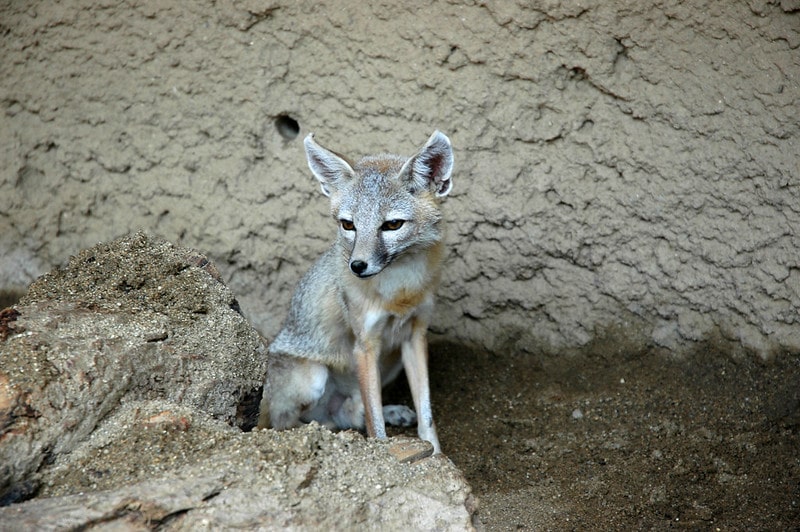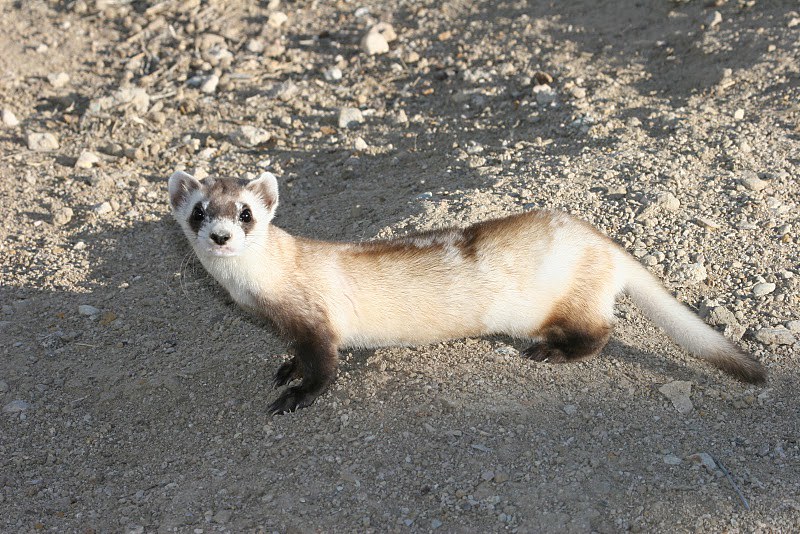In September 2021, the US Fish and Wildlife Service, a government agency dedicated to the conservation, protection, and enhancement of wildlife and its habitat, declared 23 birds, fish, and other species to be extinct, and proposed to remove them from the 1973 Endangered Species Act. Experts believe these species have passed the point of recovery. The 1973 Endangered Species Act is the country’s most effective law in protecting at-risk species from extinction, with a success rate of 99%. However, persistent human activity including land conversion for agriculture and development purposes, pollution, and climate change makes it difficult for species already listed as endangered, as well as other vulnerable species, to recover and stay protected. These are just 10 of the most endangered species in the US.
—
Endangered Species in the US
1. Red Wolf
Identifiable by its reddish fur behind their ears, neck and legs, the red wolf is the world’s most endangered wolf with only 15-17 individuals left. Once common in eastern and south central regions of the US, the red wolf was listed as a species “threatened with extinction” under the Endangered Species Preservation Act in 1967, after population numbers have dropped significantly due to decades of human activity including gunshots and vehicle collisions. Under the Act, the US Fish and Wildlife Service reintroduced them in eastern North Carolina to help conserve and recover the rare species.
2. Florida Panther
As the name suggests, the Florida panther is native to the state of Florida, where the remaining 100-180 individuals continue to roam in the wild. However, the wildcat, once ranged throughout the southeastern United States, now survives only in a tiny area of South Florida as a result of habitat destruction and widespread urbanisation to accommodate the growing human population. Inland development such as roads and highways also pose a danger to panthers attempting to cross the land. Since 1967, the Florida panther has been listed as an endangered species. The panthers can be spotted in forests, prairies, and swampland such as the Everglades National Park and Big Cypress National Preserve.
3. The Florida Manatee

The Florida manatee. Photo: The US Fish and Wildlife Service/Flickr
Florida is also home to another notable US endangered species: the manatee. In 1967, the manatee was among the first wildlife species to be protected under the newly-created Endangered Species Preservation Act. Thanks to decades of conservation efforts, manatee numbers have recovered to the point where the US Fish and Wildlife Service decided to de-list the species from endangered in 2017. However, recent water pollution from industry and urban development has heavily impacted its ecosystem, killing off seagrass beds – manatees’ main source of food – have led to the deaths of at least 881 manatees in Florida since the start of 2021 , far exceeding the annual average of 578 deaths between 2015 and 2020, in an occurrence in which The National Oceanic and Atmospheric Administration (NOAA) is calling an “unusual mortality event.” Scientists and environmentalists are arguing for the species to be considered endangered again.
4. Loggerhead Sea Turtle
The Loggerhead sea turtle first joined the endangered species list in 1978 following population decline from the destruction of its beach nesting habitats and overharvesting of its eggs. The turtles are also common victims of bycatch in commercial fishing and trawling. As 95% of its US breeding population is located in Florida – though they can be also be found in South and North Carolina, and the Alabama coasts in the Gulf of Mexico – loggerhead sea turtles were heavily impacted by the development boom there, especially in recreational beach activities in which the Sunshine State is famous for. With decades of dedicated conservation efforts, the species managed to increase 24% of its population number between 1989 and 1998, with an estimated total of more than 100,000 nests each year.
More on the topic: 7 Interesting Facts About Sea Turtles
5. California Condor
Though the bald eagle is the most recognisable bird of the prey in the US, the California condor is the largest known wild bird in North America. But it was all but extinct in the 1980s with only about six individuals left in the wild. The staggering number was a result of lead poisoning, where birds often accidentally ingest bullet fragments left in animal carcasses, and reduced eggshell thickness – which prevents the species to repopulate – from consuming pesticide DDT. The remaining six condors were then captured for an intensive breeding recovery programme, which helped boost population numbers up to 223 by 2003.
6. Mississippi Gopher Frog
It’s estimated that there are fewer than 100-250 dusky gopher frogs left in the US, all of which can only be found in the state of Mississippi, from stump holes and burrows in longleaf pine forests – though 98% of America’s native longleaf-pine forest has since been destroyed – to isolated wetlands. The frogs lay eggs in shallow ponds that easily dries up for several months of the year, which deters fish from ingesting them. The amphibian was listed as an endangered species in 2001, where the US Fish and Wildlife Service designated over 7,000 acres of protected critical habitat in Mississippi and Louisiana to help its population recovery.
7. San Joaquin Kit Fox

San Joaquin kit fox. Photo: Carley Sweet/USFWS/Flickr
San Joaquin kit foxes are about 51 cm long with big conspicuous ears, and are the smallest foxes in North America. As the name suggests, the fox inhabited much of California’s San Joaquin Valley prior to 1930 but like most endangered species, they’ve been threatened by extensive habitat loss and land conversion for agriculture and cities, as well as rodenticides in soil, which are crucial to kit fox burrows and denning. By 1979, less than 7% of the valley’s original wildlands remained undeveloped. Though it was listed as an endangered species in 1967, the kit fox population remains fewer than 7,000.
8. Franklin’s Bumblebee
The Franklin’s bumblebee has not been sighted since 2006. One of the rarest bumblebees in the US, the species can only be found between southern Oregon and northern California. Population numbers have plummeted since 1998 due to habitat loss, widespread use of agricultural pesticides, as well as diseases transported through commercial greenhouses. Though the species is only listed as a “species of concern” with no conservation measures currently in place, the International Union for Conservation of Nature (IUCN) described the bee as “imperilled”, stating that the species’ population has dropped to dangerously low levels.
You might also like: The American Bumblebee Population Has Dropped By 90% Within 20 Year
9. Black-Footed Ferret

Black-footed ferret. Photo: J. Michael Lockhart/USFWS/Flickr.
This adorable member of the weasel family is an animal that not only has black feet, but a black face mask and a black-tipped tail as well. Black-footed ferrets are the only ferret species native to the Americas and depend exclusively on prairie dog burrows for food and shelter. Conversion of native grasslands to agricultural land, widespread prairie dog eradication programmes, and non-native disease have all reduced black-footed ferret populations to less than 2% of their original range. Since falling under the protection of the Endangered Species Act in 1967 and captive breeding programmes, the black-footed ferret has recovered to close to 340 individuals in the wild.
10. Lange’s Metalmark Butterfly
Lange’s metalmark butterfly is one of the most endangered species in the US and has been protected since 1976. They can only be found in the Antioch Dunes at the southern end of San Francisco Bay. The population of the butterfly has dived to just 45 in 2006, compared to its 250,000 in historic times because of habitat loss and degradation, the mining of sand for bricks, and the invasion of non-native plants. Currently, there are only about 150 individuals remaining.
You might also like: 10 of the World’s Most Endangered Animals in 2023


















